Field Trip: The High Bridge
If you told me a year ago that I’d be visiting the Bronx three times in the subsequent 12 months, I wouldn’t have believed it. And I certainly never thought I’d be walking there.
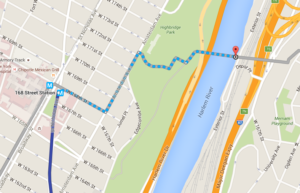 But like porch swings and celebrity nudes, pedestrian bridges are irresistible—especially ones that have been off limits for 40 years. The High Bridge between Washington Heights and the Bronx opened in 1848 as an aqueduct, transporting water over the Harlem River from the Croton Reservoir in Westchester to Manhattan; considerately and conveniently, it had a walkway on top. The aqueduct, says the New York Times, “continued to two reservoirs, including one built on what is now the site of the main public library. Croton water reached a fountain in City Hall Park and rose 50 feet, unpumped: gravity’s geyser.” The water stopped flowing in the 1950s, with the walkway following a decade later. I’m still not sure why the walkway was ever closed. Disrepair became an issue with the whole structure, and eventually community groups persuaded the city to do something about it.
But like porch swings and celebrity nudes, pedestrian bridges are irresistible—especially ones that have been off limits for 40 years. The High Bridge between Washington Heights and the Bronx opened in 1848 as an aqueduct, transporting water over the Harlem River from the Croton Reservoir in Westchester to Manhattan; considerately and conveniently, it had a walkway on top. The aqueduct, says the New York Times, “continued to two reservoirs, including one built on what is now the site of the main public library. Croton water reached a fountain in City Hall Park and rose 50 feet, unpumped: gravity’s geyser.” The water stopped flowing in the 1950s, with the walkway following a decade later. I’m still not sure why the walkway was ever closed. Disrepair became an issue with the whole structure, and eventually community groups persuaded the city to do something about it.
Click through to that New York Times article if you want more color on how the bridge was reborn. To be honest, the history was less of a draw for me than the general experience of walking over a river on a beautiful day. Andrea and I took the A train to 168th Street—we can scratch that stop off the bucket list—and walked a few blocks north and west toward Highbridge Park. If you know me at all, you know that I got a kick out of this sweatshirt.
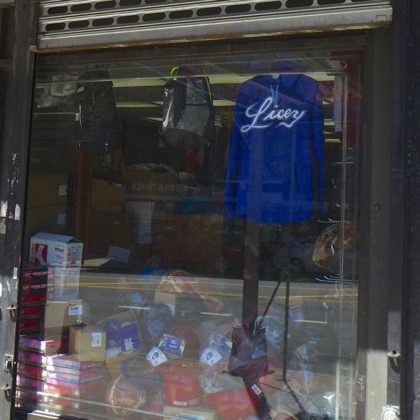 We stopped for pizza at Slice Pizza of Amsterdam, on Amsterdam Avenue. Washington Heights has undoubtedly seen plenty of gentrification in recent years, but it still felt like New York City of yore to me. I don’t know when I last came across men playing Dominoes at a table on the sidewalk.
We stopped for pizza at Slice Pizza of Amsterdam, on Amsterdam Avenue. Washington Heights has undoubtedly seen plenty of gentrification in recent years, but it still felt like New York City of yore to me. I don’t know when I last came across men playing Dominoes at a table on the sidewalk.
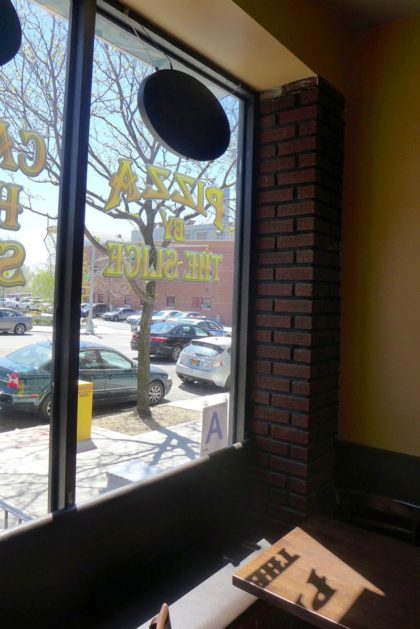 Highbridge Park is long and skinny, so we didn’t see much of it, but we did admire the swimming pool complex, built in 1936—it’s where the reservoir used to be. The purpose of those pyramid things in the middle eluded us.
Highbridge Park is long and skinny, so we didn’t see much of it, but we did admire the swimming pool complex, built in 1936—it’s where the reservoir used to be. The purpose of those pyramid things in the middle eluded us.
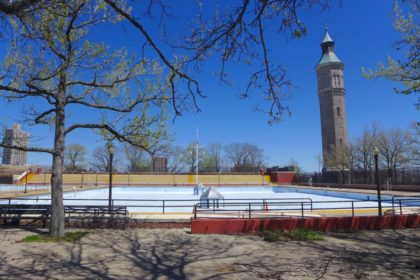 The 200-foot tower, which was finished in 1872, functioned as a water tower, and then a five-octave carillon was installed in 1958.
The 200-foot tower, which was finished in 1872, functioned as a water tower, and then a five-octave carillon was installed in 1958.
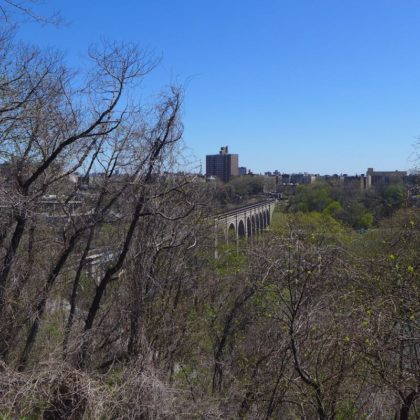 Soon enough, we were out on it. The bridge is pretty spare…. Oddly, the western and eastern halves are surfaced with different bricks and patterns. Did Manhattan and the Bronx each get to choose?
Soon enough, we were out on it. The bridge is pretty spare…. Oddly, the western and eastern halves are surfaced with different bricks and patterns. Did Manhattan and the Bronx each get to choose?
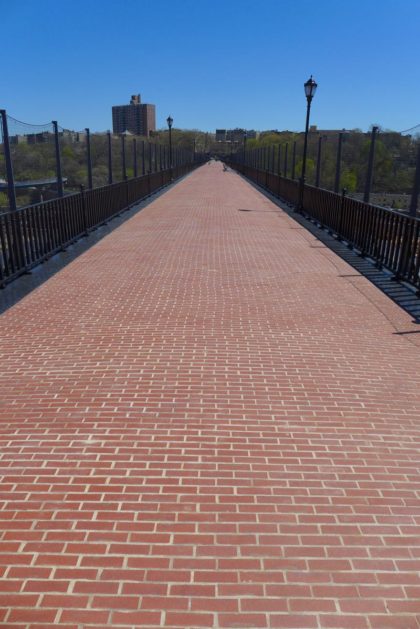
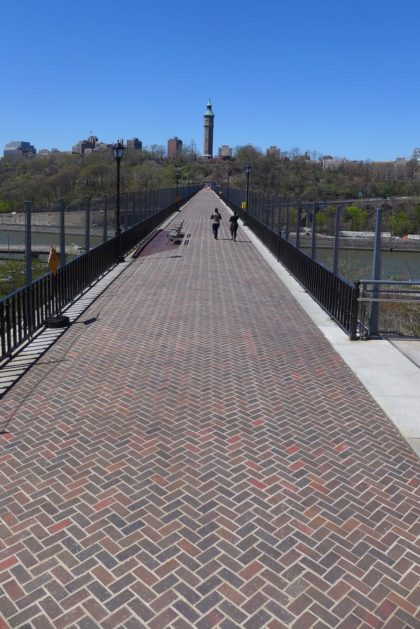 Also, on the Bronx half there are informational plaques that, we learned the hard way, are best read starting from the Bronx side. We would read a plaque, only to find ourselves scratching our heads until we reached the next one.
Also, on the Bronx half there are informational plaques that, we learned the hard way, are best read starting from the Bronx side. We would read a plaque, only to find ourselves scratching our heads until we reached the next one.
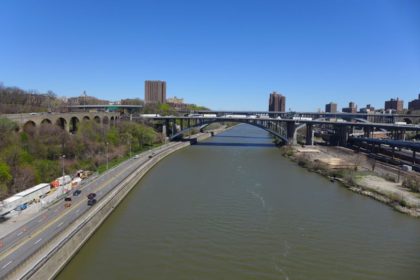
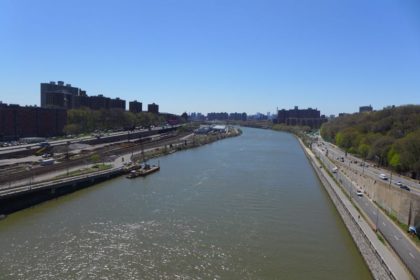 There are a handful of benches placed, for whatever reason, on metal insets. Maybe if you’re sopping wet the water dripping off you will drain away?
There are a handful of benches placed, for whatever reason, on metal insets. Maybe if you’re sopping wet the water dripping off you will drain away?
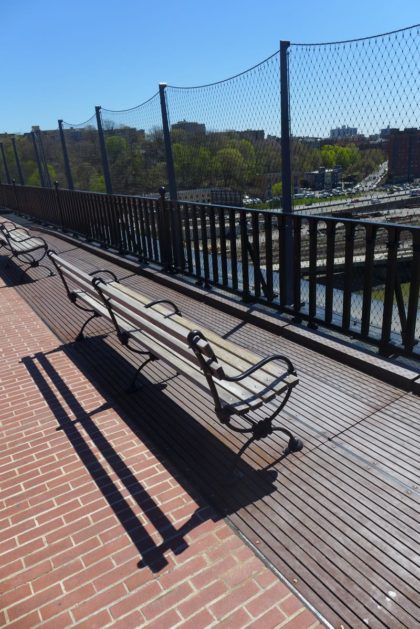 And then we were in the Bronx. We only poked around a bit, because it wasn’t the most interesting area I’ve ever seen. Three items of note: a wonderful old set of stairs leading down to the riverbank; a frog fountain that spits out into a flume mimicking (one presumes) the path of the old aqueduct; a Mellencampian pink house.
And then we were in the Bronx. We only poked around a bit, because it wasn’t the most interesting area I’ve ever seen. Three items of note: a wonderful old set of stairs leading down to the riverbank; a frog fountain that spits out into a flume mimicking (one presumes) the path of the old aqueduct; a Mellencampian pink house.
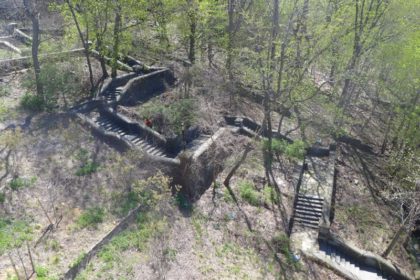
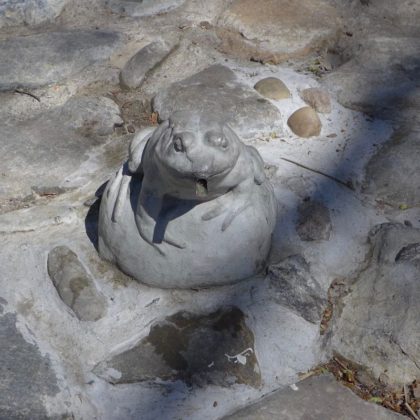
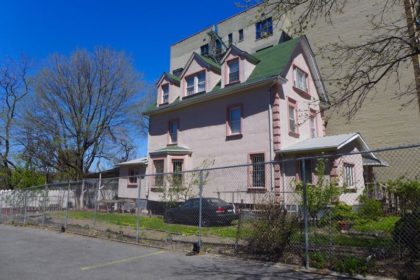 The regret I felt about not walking down those stone stairs evaporated when we had to walk back up the stairs on the other side. They’re so steep we had to rest on a landing. (There’s a ramp somewhere, of course.)
The regret I felt about not walking down those stone stairs evaporated when we had to walk back up the stairs on the other side. They’re so steep we had to rest on a landing. (There’s a ramp somewhere, of course.)
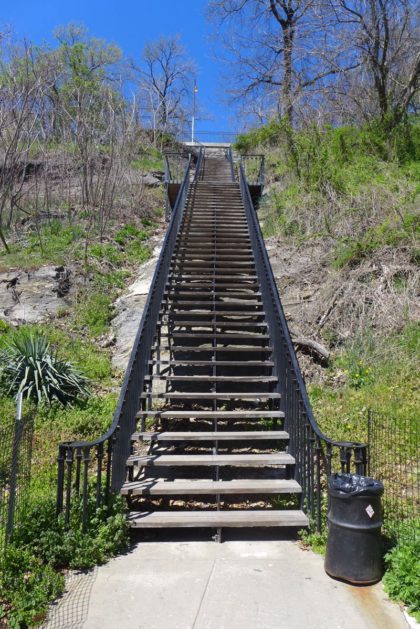 One of the plaques on the bridge explained that a portion of the stone bridge was replaced by a single steel span so larger ships could pass under it. This only made sense to us when we were back on the Manhattan side, pausing to admire the bridge from a different spot.
One of the plaques on the bridge explained that a portion of the stone bridge was replaced by a single steel span so larger ships could pass under it. This only made sense to us when we were back on the Manhattan side, pausing to admire the bridge from a different spot.
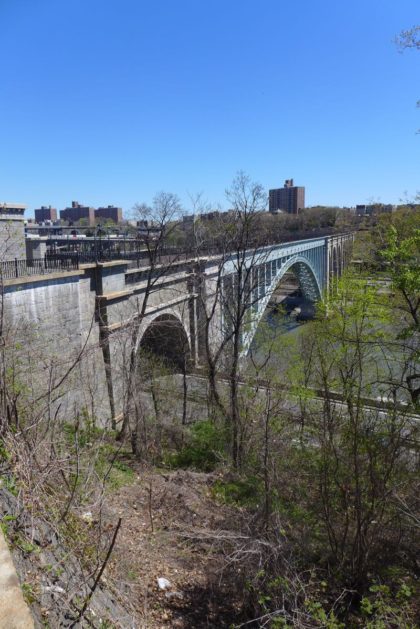 I was sort of bummed about that change—stone generally trumps metal—until, later that day, Andrea sent me a photo that @qsylver had just posted on Instagram.
I was sort of bummed about that change—stone generally trumps metal—until, later that day, Andrea sent me a photo that @qsylver had just posted on Instagram.
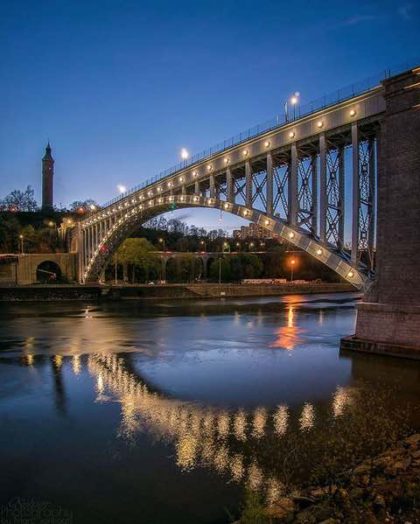 Previous Field Trip posts:
Previous Field Trip posts:
• The Broad
• Crown Heights
• Spuyten Duyvil
• New York Botanical Garden
• Bed-Stuy
• The New Whitney Museum
• Bushwick-ish
• The Rockaways
• Greenpoint
• S-Cruise by Smartboat
• Wave Hill
• Governors Island
• F.D.R. Four Freedoms Park
• Litchfield County, Conn.
• One Wall Street
• Behind the Scenes at Grand Central Terminal
• The Howard/Crosby Microneighborhood
• Federal Reserve Bank of New York
• East River Ferry
• Museum of American Finance







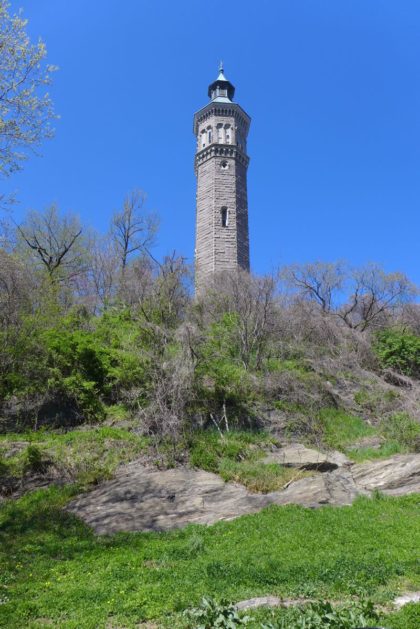
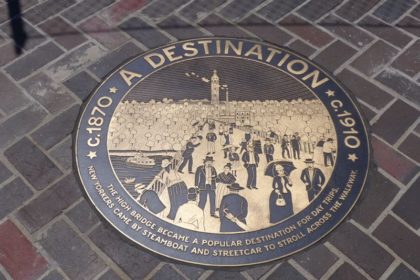







Nice story, thanks. Would it make more sense to take the 4 to 170th St in the Bronx and then walk across the bridge to Manhattan, taking the 1 from 168th St home?
Great article. For all the latest on the High Bridge, Highbridge Park, and the area immediately surrounding please look at highbridgeparkdevelopment.blogspt.com Have a great day at the High Bridge.
So, I finally made it. I recommend taking the 4 train to 170th St, walking across the bridge to Manhattan, and then getting on the 1 train at 168th St home. It was a fun, easy outing with kids, and we stopped for good pizza in Washington Heights.
“we did admire the swimming pool complex, built in 1936—it’s where the reservoir used to be. The purpose of those pyramid things in the middle eluded us”
From ‘Highbridge Play Center, NYC Landmarks Preservation Commission, Designation List 395 LP-2237’:
“The swimming pool has two pyramidal intake units that circulate water through the filtration system located under the bleachers on the north side of the complex. These intakes are sited where fountains that originally aerated the pool water once stood.”
http://www.nyc.gov/html/lpc/downloads/pdf/reports/Highbridge_pool.pdf